Just because your pup’s poops are gone doesn’t mean their legacy has to linger! Our deodorizer and sanitizing spray works so well, you’ll forget there were ever any ‘landmines’ in your yard. Fresh, sanitized, and totally inviting for that next barefoot backyard BBQ.
Yard Sanitizing and Deodorizing for Your Dog
At AwwCrap! Pooper Scooper Service, we understand that our furry friends are an integral part of our lives. They bring us joy, companionship, and love. However, with ownership comes responsibility, and as pet parents, we must ensure that we keep our yards clean and free from harmful bacteria, viruses, and other toxins that can pose a risk to our pet’s health.
Yard sanitizing and deodorizing for dogs is a critical aspect of responsible pet ownership. Not only does it keep our pets safe and healthy, but it also ensures that we keep our neighbors happy and our yards clean and free from odors.
Why is Yard Sanitizing and Deodorizing Important?
Pets, especially dogs, spend a considerable amount of time in the yard. They play, dig, and even do their business there. While it’s a natural part of their routine, it can leave behind harmful bacteria and viruses that can pose a risk to their health.
Apart from that, pet waste and urine can also leave behind a strong odor that can be unpleasant for you and your neighbors. The odor can also attract pests like flies and rodents, which can be a nuisance.
That’s where yard sanitizing and deodorizing comes in. By regularly cleaning and disinfecting your yard, you can eliminate harmful bacteria and viruses that can cause diseases like salmonella, giardia, and E. coli.
Additionally, deodorizing your yard helps to eliminate unpleasant odors, making it a more pleasant environment for you, your pet, and your neighbors.
How to Sanitize and Deodorize Your Yard
The first step in yard sanitizing and deodorizing is to remove any visible pet waste. Scoop it up and dispose of it properly. This will help prevent the spread of bacteria and eliminate any odors.
Next, use a garden hose or pressure washer to wash away any remaining waste and urine. Be sure to pay extra attention to areas where your pet frequently does their business, as these areas tend to harbor the most bacteria.
After washing away all visible waste, it’s time to sanitize the yard. There are various products available in the market that you can use to disinfect your yard. Choose a product that is safe for pets and follow the instructions on the label carefully.
Make sure to apply the disinfectant to the entire yard, paying extra attention to areas where your pet frequently plays or rests. Allow the disinfectant to sit for the recommended time before rinsing it off.
Finally, deodorize the yard to eliminate any remaining odors. You can use commercial products specifically designed for pet odor removal or create your own using natural ingredients like vinegar and baking soda.
Spread the deodorizer over the entire yard, paying extra attention to areas where your pet frequently does their business. Allow it to sit for some time before washing it away with water.
When to Sanitize and Deodorize Your Yard
The frequency of yard sanitizing and deodorizing will depend on the number of pets you have, the size of your yard, and your pet’s habits. A good rule of thumb is to sanitize and deodorize your yard once every two weeks.
If you have multiple pets or a smaller yard, you may need to do it more frequently. On the other hand, if you have a larger yard or a single pet, you may be able to do it less often.
Conclusion
Yard sanitizing and deodorizing is an essential part of responsible pet ownership. By regularly cleaning, disinfecting, and deodorizing your yard, you can eliminate harmful bacteria and viruses and create a more pleasant environment for you, your pet, and your neighbors.
At [insert company name], we understand the importance of
• Cleans and freshens
• Sanitizes: Pet areas – dog houses, dog yards, water bowls, dog crates, kennel runs, pet cages, cat condos
• Quickly cleans: Mops, scrub brushes, and doormats
• Reaches: hard to clean areas cracks, corners, and crevices
• Dog Play Areas: any type of ground cover including gravel, cement, wood chips or artificial turf
• Sanitizes equipment and facilities

